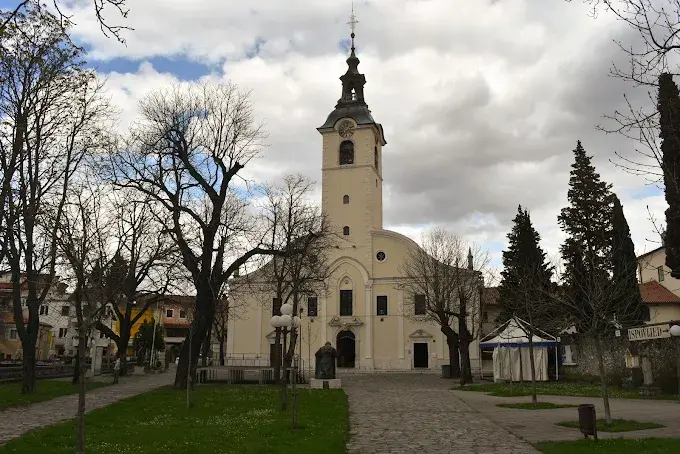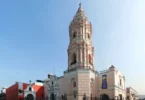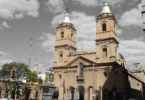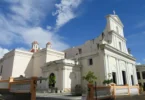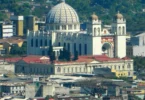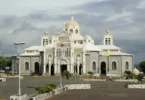Introduction
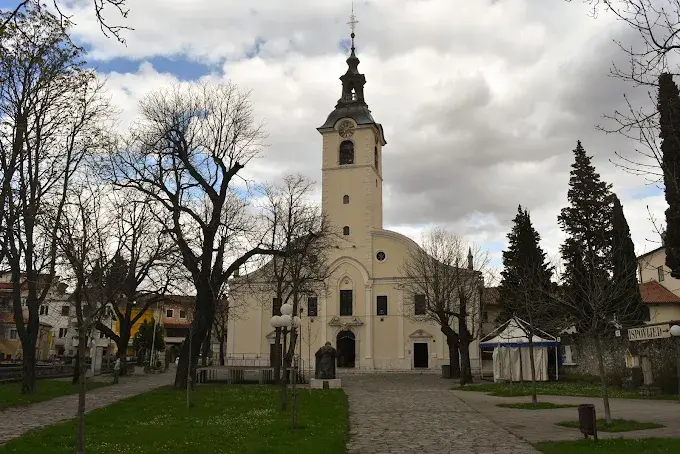
The Shrine of Our Lady of Trsat is one of the most well-known and oldest places in Croatia where people go to honor the Virgin Mary. In Croatian, it’s called “Gospa Trsatska” or “Trsatska Sveta Kuca.” You’ll find it up on Trsat Hill, in a quiet part of the city of Rijeka. The spot has a calm, peaceful feel to it, and it’s not just locals who come people from all over Croatia and even from other countries visit every day. Some come to pray, some for the history, and some just to take in the beauty of the place. It’s been a meaningful destination for pilgrims for centuries.
Trsat – A Family Sanctuary
Trsat is more than just a place of worship it’s a sanctuary that many people, especially families, hold close to their hearts. Every year, thousands of believers make their way there, especially around the Feast of the Assumption of Mary in August. It’s a special place known for its deep connection to Mary and for the many prayers, blessings, and spiritual moments shared there. The sanctuary isn’t just one building it’s made up of several parts: the Church of the Blessed Virgin Mary of Trsat (also called the Shrine of Our Lady of Trsat), the Chapel of the Ex-Voto, a peaceful Franciscan Monastery with a beautiful cloister, the Thesaurus (which holds sacred treasures), the Chapel of the Gifts of the Oath, Mary’s Park, the Pastoral Center named after Pope John Paul II, and the residence of the friars who take care of the place. What makes Trsat really unique is its connection to family life. People don’t just visit the sanctuary to pray they come to feel closer to Mary and, through her, to Jesus, Joseph, and the Holy Family of Nazareth. That’s why Trsat is often called a family sanctuary. It’s not just about religion it’s about relationships, love, faith, and the everyday life of a family that tries to stay close to God. The bishops in Rijeka and the surrounding area know how important this is. They make sure families feel supported and spiritually cared for, especially when they come to Trsat. It’s a place where you feel like you’re not alone like your worries and hopes are heard. For many families living along the Croatian coast, especially those on the islands, Our Lady of Trsat is part of their daily lives. You’ll find her image or mention in homes, on walls, or near dining tables. She’s seen not just as a holy figure but as someone who walks with them through everyday life in joys, in struggles, in everything. And because she is close to both God and to people, Trsat becomes a place where heaven and earth feel a little closer. In places like this, believers feel that God is near. They trust that He’s with them, guiding their lives, holding up their families, and walking with them even when things get tough. That’s what makes Trsat more than just a sanctuary it’s a place where people feel at home, safe, and seen by God.
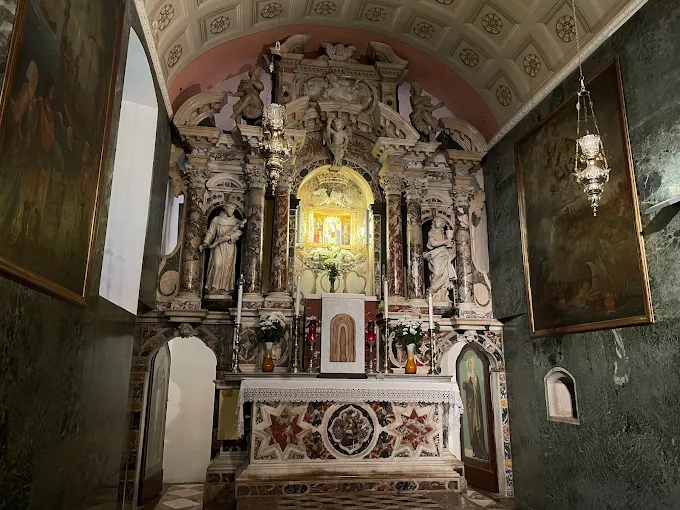
The heart of Trsat is its shrine the Sanctuary of Our Lady. For centuries, people have come here looking for peace, help, healing, or just to feel close to Mary. It’s not just a holy place. It’s a place full of stories, legends, and generations of belief. People call Trsat the “Croatian Nazareth.” That’s because there’s an old tradition that says the house where Mary was born the very same house where the Angel appeared to her was brought here by angels in 1291. Yes, angels. According to the story, they carried the small house from Nazareth and placed it right on the hill where the Franciscan monastery stands today. It stayed there for a few years, then in 1294, the angels moved it again this time to Loreto, in Italy, where it still stands. Sounds like a legend, sure but it’s one that people have believed for generations. And parts of it actually match up with historical events. During the Crusades, when Christian lands in the Holy Land were under threat, many relics were taken west to protect them. Monks and knights even the Templars helped carry them out. Some say that “angels” was just a way of talking about these protectors. There’s even a record from 1294 of a young noblewoman named Margaret Angeli. Her dowry included something called “stones from the Holy House.” Around the same time, her family the Angevins, who ruled Naples were trying to win favor in Croatia. They supported churches, built alliances, and worked with powerful Croatian families like the Frankopans.
The Frankopans played a key role in Trsat’s history. They were the ones who protected and promoted the shrine. Nikola Frankopan even sent people to Nazareth to measure the foundation of Mary’s house, to try to make sense of what he had maybe he only had parts of it, like the stones. Later, the Frankopans gave what they had to the Pope. Since the closest papal land was near Ancona, the house (or what was left of it) ended up in Loreto. That’s how the story goes. Back in Trsat, the Frankopans built a chapel, then a bigger church. It’s believed that Nikola I Frankopan started it around 1431. His family added more over time. In 1453, Prince Martin Frankopan added a new part to the church to hold a special painting of Mary, said to be a gift from Pope Urban V in 1367 some say it was painted by St. Luke. Martin also built the monastery next door. In 1468, the Franciscans arrived and have stayed ever since, quietly caring for the sanctuary and its visitors. Later, in 1644, another big renovation happened. A new section was added and the whole church was rebuilt in Baroque style. The final touch came in 1824, though more changes followed. A fire in 1691 meant the monastery had to be rebuilt again, and by the mid-1700s, the church had a new sanctuary with rich ceiling decorations above the crypt.
During all this time, Trsat wasn’t just standing still. It became a center for sailors and travelers, especially those in the Kvarner region. It was a place of comfort and protection. When routes between Europe and the Middle East were mostly by sea, Trsat was like a resting place along the way. And with Loreto just across the Adriatic near Ancona a city with many Croats the connection between the two shrines only grew stronger. In the 20th century, artists added their own marks to the shrine. Vladimir Kirin created five images on greenish marble slabs around the sanctuary. Ivo Režek painted the 14 Stations of the Cross in fresco images that pilgrims still stop at today. Even the guardians of the place left their own stories. One of the most famous was Franjo Glavinič, a priest and writer who lived from 1585 to 1652. He wrote in Croatian, Latin, and Italian, and was a respected expert in the Glagolitic script. So when people visit Trsat today, they’re not just walking into a church. They’re stepping into centuries of devotion, history, family stories, and quiet miracles.
Architecture of Shrine of Mary of God of Trsat, Rijeka, Croatia
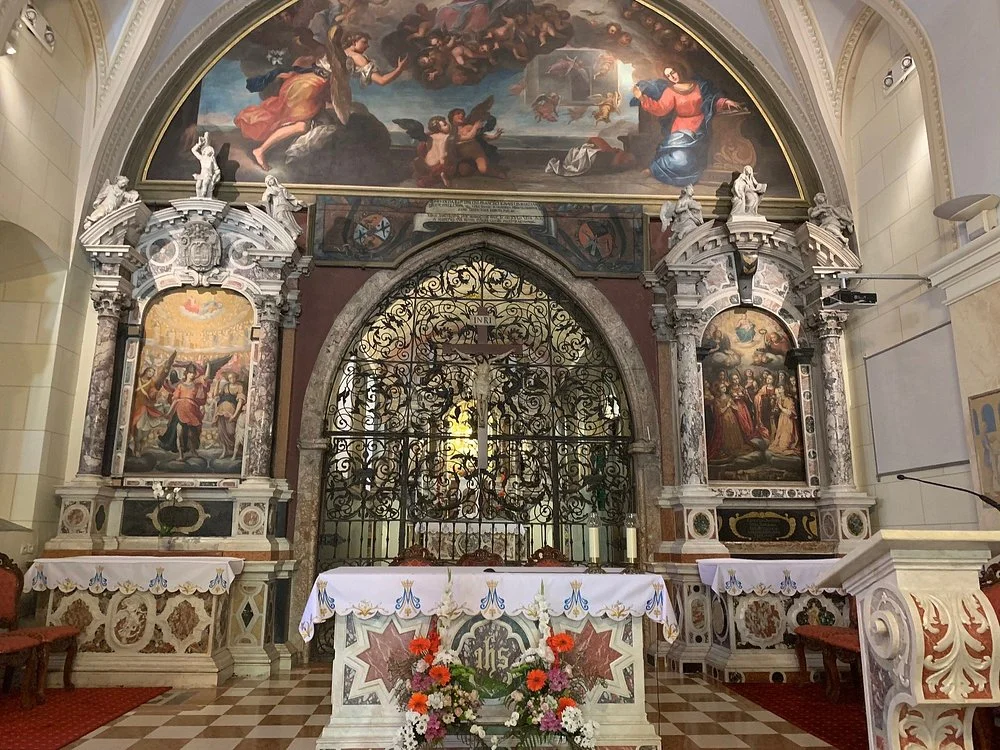
Architectural style: Baroque architecture
Burials: Petar Kružić
Architectural Style of Trsat Sanctuary
The church at Trsat reflects a blend of various architectural influences, shaped over centuries. The façade, for example, shows a mix of different styles that were layered over time, which is a feature commonly seen in Croatia, especially when compared to the earlier Italian examples. This eclectic mix belongs to the Biedermeier period, a time when national identity and civic tastes were on the rise. The church saw significant renovations in 1824, during which the bell tower was built by Jakov Matković in the Baroque tradition. Matković’s work is particularly impressive because he managed to integrate an old window decorated with a finely carved Gothic rope motif into the bell tower’s façade. The classicist influence is apparent too, especially in the pilasters (half-columns) and the composite capitals. The façade is adorned with a shallow bas-relief of vegetables, adding to its unique character. The layout also misleads at first glance, as it seems to suggest a three-aisled interior, but this is just an illusion. Looking at the side entrances, you can see the remnants of 17th-century portals. These were crafted in a high Renaissance style and add a touch of elegance to the church. If you examine the right-side altar closely, you’ll notice carvings of rampant lions breaking bread this is a nod to the Frankopan family, who were the church’s greatest benefactors. The Frankopan coat of arms, a six-pointed star, is seen several times in the façade and altar details, symbolizing the family’s legacy.
Trsat Sanctuary’s Early Roots
The church’s roots go back to the end of the 13th century when the Frankopans first built a church here. The oldest parts of the current building, however, date back to the 15th century. It was Prince Martin Frankopan who, with permission from Pope Nicholas V, had a new church and monastery constructed. The original church, built in the late Gothic style, was simple and featured a single nave and rectangular sanctuary. Fragments of this early Gothic structure can still be seen, especially in the lower parts of the sanctuary walls and the southern side of the church. In the 17th century, the church underwent a Baroque reconstruction commissioned by the Frankopans, who were keen to preserve the original sanctuary. This work transformed the building, but some remnants of the original structure have been preserved, particularly in the massive columns separating the main nave from smaller ones.
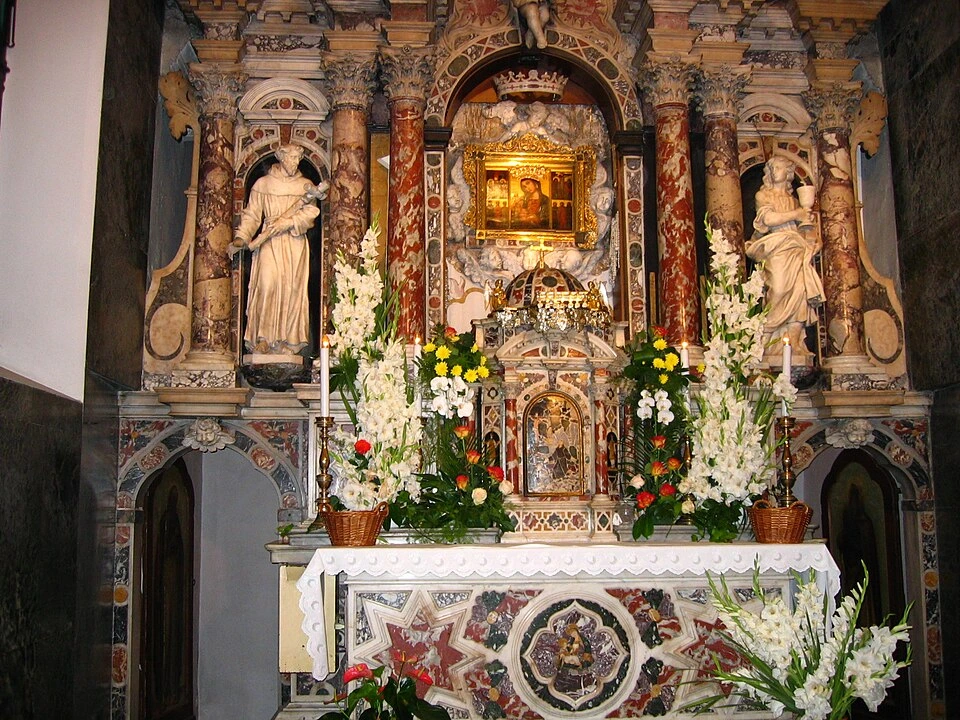
The Altars and Their Stories
One of the most interesting aspects of the church is its altars, which have changed and been replaced throughout the centuries. The altar dedicated to Saint Francis of Assisi, for instance, was originally built in the early 18th century by Baron Franjo Čikulini, an imperial count. The altar was replaced in 1725, and today, the sculptures of Saint Paschal and Saint Bernardino are featured in the altarpiece. The painting of Saint Francis’ stigmatization, created in 1891, adds another layer of historical depth to the altar. The chapel of Saint Anne, built by Baron Stjepan della Rovere in 1624, served as a family tomb, and the inscriptions and paintings here are a testament to the baron’s influence. The chapel was later integrated into the left nave during the Baroque reconstruction. The altar in this chapel features beautiful paintings depicting the della Rovere family’s patron saints, along with a painting of the baron himself.
Petar Kružić and His Contribution
Petar Kružić, one of Croatia’s most revered military leaders, played a crucial role in the development of the church and monastery. He was a major benefactor, and his chapel, built in 1531, still stands today. This chapel was integrated into the left nave during the Baroque period, and the altar here, with its detailed carvings and powerful symbolism, is a reminder of his legacy.
The Frankopans and Their Burial Site
The church has long been a privileged burial site, especially for the Frankopan family. The crypt under the sanctuary was reserved for the family, and it is here that the earliest members of the family, including Martin Frankopan and his wife Doroteja, were laid to rest. Later members, such as Nikola IX Frankopan, were also buried here. The family’s significance in Croatian history is reflected in the beautiful tombs, sculptures, and inscriptions that line the crypt.
The Sculptures, Altars, and Other Works of Art
As you walk through the church, you’ll come across a wealth of artistic treasures. The marble high altar, donated by Ivan Uzolin in 1695, stands as a magnificent centerpiece. In the side chapels, there are altars dedicated to Saint Michael, Saint Catherine, and Saint John of Nepomuk, each one an artistic masterpiece in its own right. The intricate marble work, combined with the paintings and sculptures, tells the story of the church’s evolution. In the main nave, the altar of Saint Michael stands out, with its delicate marble work and the depiction of the archangel defeating the devil. The altars dedicated to Saint Catherine and Saint Nicholas, with their beautiful wood carvings, add a sense of reverence and grace to the space.
Cloister and Votive Offerings
The church also features a stunning cloister, designed as part of the 17th-century Baroque reconstruction. It was intended as a peaceful space for pilgrims to rest and refresh themselves. While the cloister is open and airy, its decorative columns and cross vaults offer a glimpse into the grandeur of continental Baroque architecture. The chapel of ex-votos, built in the early 20th century, is another unique feature. It houses a vast collection of votive offerings, including paintings, sculptures, and even crutches, all donated by those who sought the help of Our Lady of Trsat. This space reflects the deep devotion of the people and the international importance of the shrine.
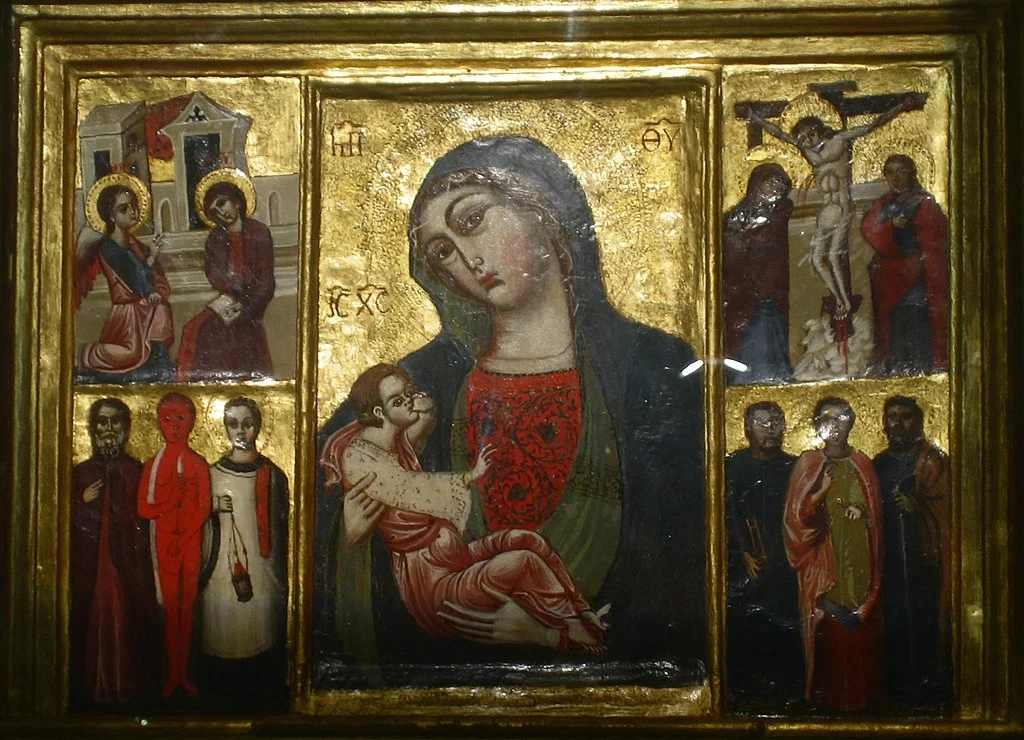
The Miraculous Image of the Blessed Virgin Mary
The image of Our Lady of Trsat, also called the “Mother of Mercy,” is a true treasure. The original painting is kept in the Trsat Monastery, where it’s been venerated for centuries. The story goes that in 1367, after the Holy House was lost, Pope Urban V sent this miraculous image to the people of Trsat, who were grieving. It was a gesture of comfort and became a symbol of hope. According to tradition, this image was painted by Saint Luke himself. It’s painted on a cedar wood panel that’s divided into three sections. The image is so cherished that it was crowned with a real gold crown on September 8, 1715, in a ceremony organized by the Croatian Parliament. This was a huge moment, as it was the first time an image of Mary outside of Italy had been crowned by the Pope. Over the centuries, the image has played an important role in the devotion to the Virgin Mary in Trsat. As early as the 15th century, Pope granted special indulgences to anyone who visited the shrine. Even today, people continue to visit it, drawn by the grace and protection Mary is believed to offer.
The painting itself is divided into three vertical panels. In the center, the Virgin Mary is shown breastfeeding the child Jesus. Her gentle gaze is directed not only at her son but also at the viewer. Jesus, though still a child, looks serious and raises his hand in blessing. Above, on the left and right panels, are scenes from the key moments in salvation history: the Annunciation and the Redemption. The Redemption scene is depicted in the classic “Deisis” style, where Christ’s crucifixion is shown, and both Saint Peter and Saint John are present. Below, we see the apostles and saints who continued Christ’s work. On the right side are Saints Peter, John, and Paul, and on the left side, there are Saint Nicholas, Saint Bartholomew (who’s shown with red coloring to symbolize his martyrdom), and Saint Stephen.
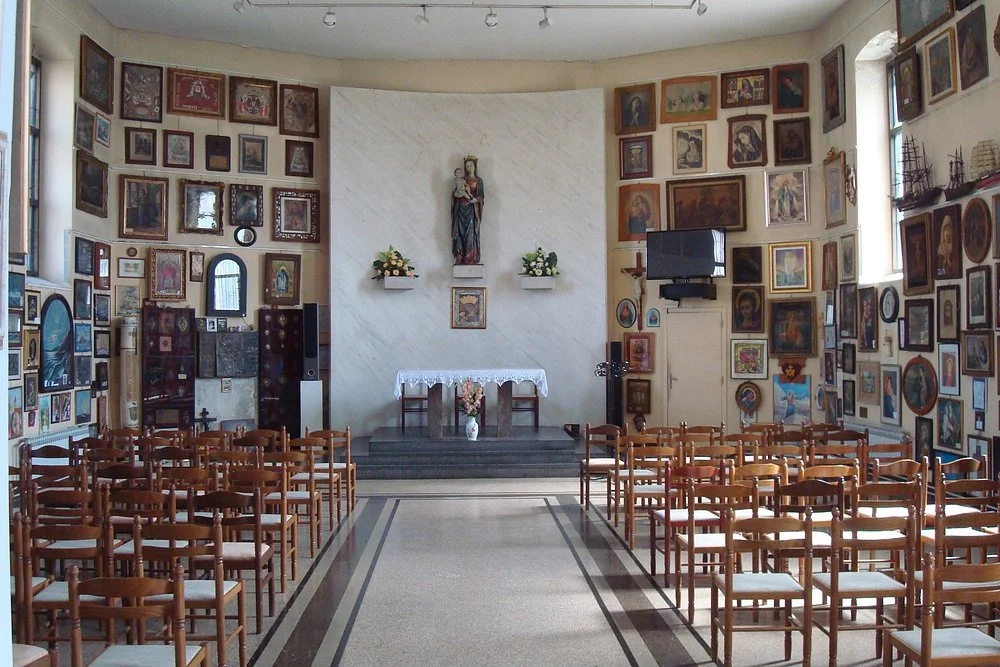
Franciscan Monastery and the Chapel of the Votive Gifts
Right next to the church, there’s this old Franciscan monastery. It was built way back in 1468, thanks to Prince Martin Frankapan. That’s when the Franciscans moved in. The place has been there ever since. Inside, there’s an old library full of books, an archive, and a treasury with gifts and offerings going all the way back to the 1300s. One of the most important things there is the Gothic triptych of Our Lady of Trsat. People say Pope Urban V gave it to the Croats in 1367. According to tradition, it was painted by Saint Luke himself, which is why people believed it had miraculous powers. There’s also a big reliquary donated by Barbara Frankapan in 1485. She was a Serbian noblewoman. Another treasure is a double-headed eagle made of pure gold, decorated with jewels. It was a gift from Emperor Charles V in 1536. And there’s a small silver statue of the Virgin Mary with Jesus, about 35 cm tall. That was given in 1597 by Croatian ban Toma Bakač–Erdödy, after his son was healed. The monastery also keeps Maria Theresa’s mass vestments and Leopold’s candlesticks. All still there. The summer dining room has big wall and ceiling paintings by artists Tasca and Schön. And if you walk through the hallway that leads to the Franciscan rooms, you’ll see paintings by some modern Croatian artists, plus some older baroque ones by Valentin Metzinger. He was from Lorraine but lived in Ljubljana. In 1629, a huge fire burned down most of the monastery. A lot of art was lost. But they rebuilt it right away. Later on, in the early 1800s, they added two more wings and a second floor. A guy named Mihovil Kumar led the rebuilding and also started working on what we now call the Chapel of the Votive Gifts.
That chapel is full of emotion. There are paintings of sailors and ships stuck in storms, asking for help. People came here to pray, and they left things behind to say thanks. There’s also a Gothic statue of Our Lady of Slunj. And you’ll find lots of smaller gifts too, left by people from the 1800s till now. Back in the 1600s, the monastery also became a school. A gymnasium for young Franciscans. Later, it had a theology school. Even the first elementary school in Trsat started here. And the first hospital in Rijeka too. The library is something else. Over 20,000 books. A few are really rare. Like the first Croatian book that wasn’t written in Glagolitic called the Lekcionar Bernarda Splitanina. There’s also Evangelistarum from 1532, written by Marko Marulić. And Raj duse, a prayer book that belonged to Countess Katarina Zrinski. That one was written by Nikola Desic. This isn’t just a monastery. It’s a place filled with history, stories, and faith. People lived here, prayed here, studied here. Some came for healing. Some came just to feel peace. And it’s all still here.
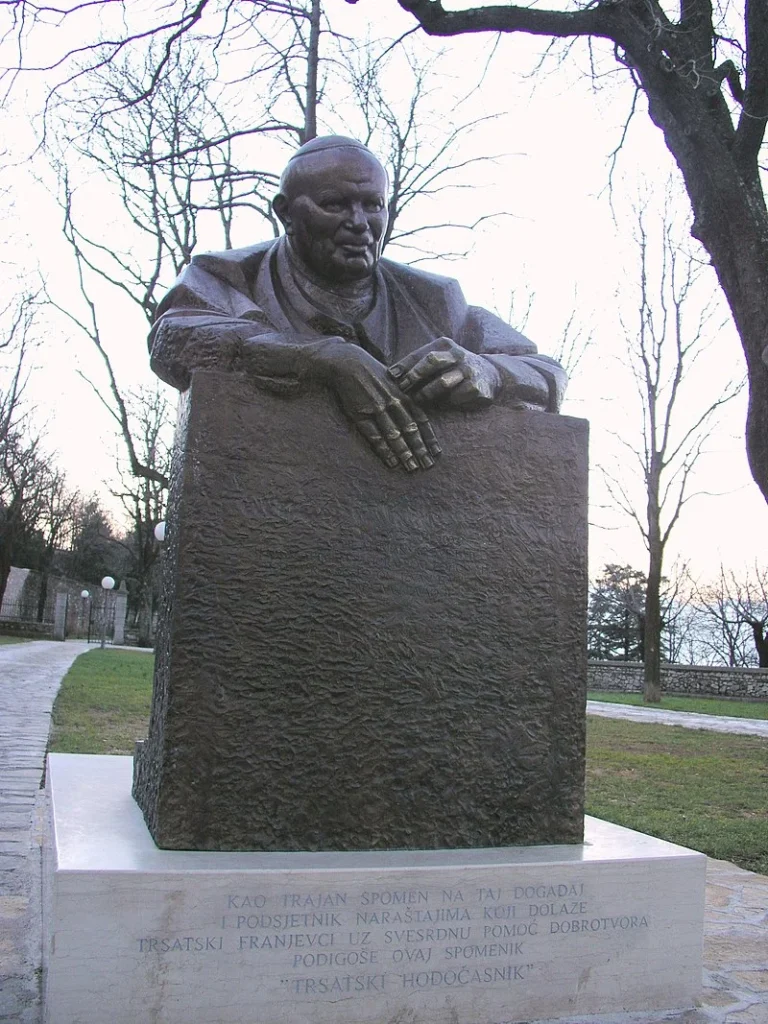
The Statue of Pope John Paul II – The Pilgrim of Trsat
Near the Marian shrine, there’s a bronze statue of Pope John Paul II, created by sculptor Antun Jurkić. The statue shows the Pope kneeling in prayer before the image of Our Lady of Trsat. This statue was placed here in May 2005 to honor his third visit to Croatia. It’s called The Pilgrim of Trsat, and it’s a tribute to his deep connection with the shrine. The statue holds even more significance because it’s the first one dedicated to Pope John Paul II after his passing. Cardinal Josip Bozanić, the Archbishop of Zagreb, led the unveiling ceremony. On the statue, you’ll find an inscription in Croatian that says: “On Pentecost, June 8, 2003, this Marian sanctuary was visited by Pope John Paul II during his third pastoral journey to Croatia, his hundredth and jubilee journey beyond the borders of Italy.” There’s also a quote from the Pope himself: “Pray for me while I am alive and when I am dead.” These words, spoken by him during his visit, continue to resonate with many people who come to the shrine.
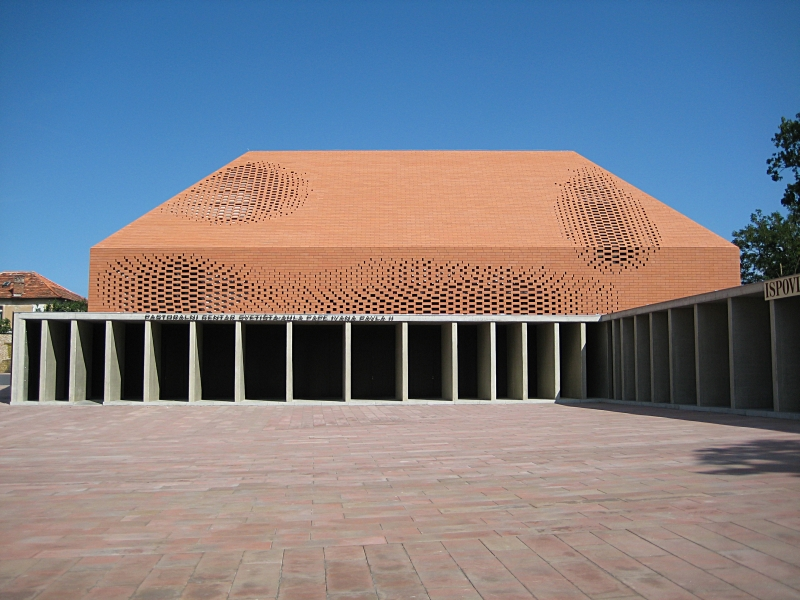
Pope John Paul II Hall – A Place That Came from a Visit and a Promise
This hall, part of the Shrine of Our Lady of Trsat, didn’t just appear overnight. It came to life after Pope John Paul II visited the shrine in 2003. During that visit, he blessed a cornerstone for a new pastoral center. That stone was finally laid in October 2006, on a spot where an old farm building used to stand. By June 5, 2008, the building was done and opened. That day marked five years since the Pope’s visit. None of it would’ve happened without Fr. Serafin Sobol. He pushed through with a lot of help from donors and people who believed in the idea. Now, the place has a big hall that seats around 300 people. Beside it, there are four smaller rooms. These are used by the Franciscan Youth, the Secular Franciscan Order, the choir, and a group that works under the name of Pope John Paul II. Everything’s connected by one staircase, and yes, there’s a toilet for the pilgrims which, if you’ve traveled far, is more important than people think. The architect who designed the building actually won an award for it the Viktor Kovacic award in 2008. Says a lot. Right next to the hall is the expanded pilgrimage area. There’s a new outdoor altar now, and Mary’s Park has been fixed up to hold more people, give them space to sit, pray, or just breathe. One nice detail during big Masses, the front porch of the hall turns into a confession area. Simple setup, but it works. Since 2010, the hall’s also been home to the Croatian Catholic Film Festival. Faith and film, all in one place.
Feast Day
Feast Day : 15 August
The main feast day of the Shrine of Mary of God of Trsat in Rijeka, Croatia is celebrated on August 15th, which is the Feast of the Assumption of the Blessed Virgin Mary. This day is particularly significant for the shrine and its devotees.
Church Mass Timing
Monday to Saturday : 7:00 AM, 8:30 AM, 6:30 PM.
Sunday : 7:00 AM, 9:00 AM , 10:00 AM, 11:30 AM, 6:30 PM.
Church Opening Time:
Monday to Sunday : 6:00 am – 8:00 pm.
Contact Info
Address : Shrine of Mary of God of Trsat
Frankopanski trg 12, 51000, Rijeka, Croatia.
Phone : +385 51 452 900
Accommodations
Connectivities
Airway
Shrine of Mary of God of Trsat, Rijeka, Croatia, to Rijeka International Airport, distance between 1 25 min (24.0 km) via A7.
Railway
Shrine of Mary of God of Trsat, Rijeka, Croatia, to Rijeka Train Station Hrvatska, distance between 12 min (4.9 km) via Kumičićeva ul.

